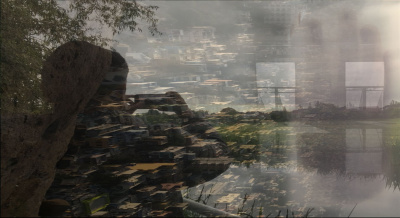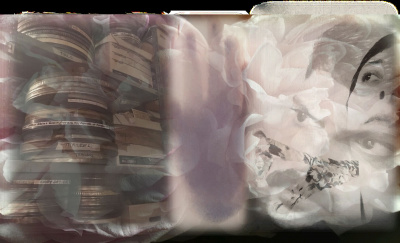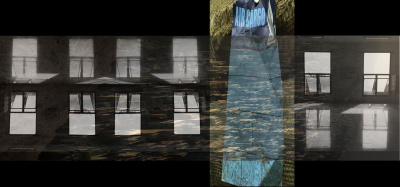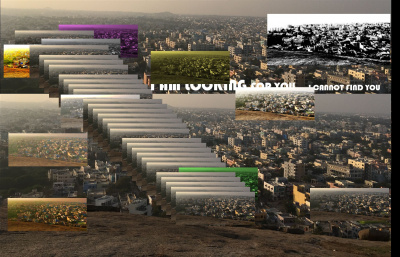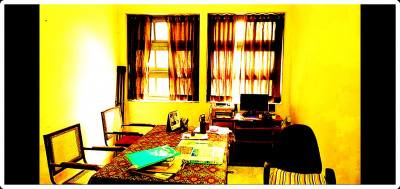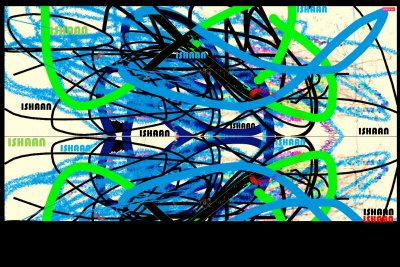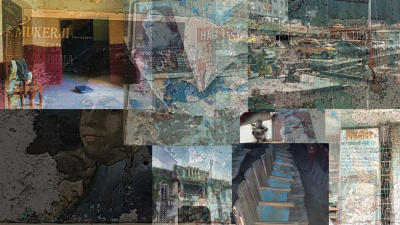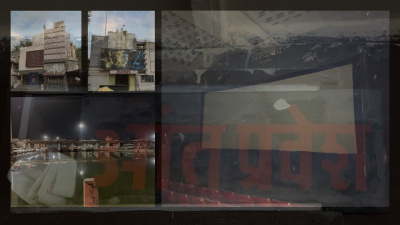In this photo essay, Monia Acciari visualizes a curatorial process attempting to reconcile intimate and public absences, loss, and creativity.
Click on the title image to explore the photo series.
Preamble
This photo essay is a visual journey that details a creative process that is not linear. It aims to detail impalpable sensitivities and lived experiences into composed snapshots. These images are the shape of layers of memories, encounters, annotations, losses, and unexplainable connections.
Us 1: Absences
The first layered visualization on the idea of absence. It merges intimate memories and intangible emotions, as a (subtle) public disclosure of them. The encounter with someone or with something is often the beginning of a journey that transcends that first encounter to become a new liaison, an absent-presence. While grieving the absent, creatively and intellectually I transform that absence into a tangible presence, to reflect on absences as loud and dense moments. It is not only a way to create a curatorial cathartic process rooted in who we are, it is also a way of tapping into passions, archives, and spaces where silent films are not so silent, and sounds not only sounds. The photo is a pixel of a curatorial process of the soul and the film.
Us 2: Emptiness
It is a visual reflection on other articulations of an absence, which is emptiness. Emptiness is the voluntary or involuntary truancy of something or someone; similarly, emptiness is also a space where an opportunity can take place. Once again, Monia begins with her personal story, to create from a private experience the idea of emptiness as the possibility for new fulfilments. The narrative journeys she proposes start from an archival image of a film journey, that intersects with the various shades of everyone’s emptiness.
Us 3: Hrishikesh
This is a visualization generated to celebrate how seeing and hearing are two forms of distance from an object. This selection is subjective: what we see is often what we want to see, what we hear is often what we want to hear. The photo is a reference to one of the Gods from India meaning the Lord of Senses, and in this spirit this image wants to reflect on how senses can interchange. What if we swap these sensorial choices and reduce the distance? It observes how «you» observe, and reflects on the distance of our senses from one another. This image shows once again the need to stay open, and to think about sound and images in films as mutually exclusive.
Us 4: I Am Looking for You But I Cannot Find You
This work is a visual reflection on the multiple modalities of access and visions of a subject. It is an homage to the Norient Festival 2022 curatorial team, at the way we viewed films, at how we interacted with each other’s lives in search of a common space of expression, which we found.
Us 5: Where I Imagine You Are
It is a photographic reflection on where «us» currently is: stuck in the past, working at the desk, with windows open, and yet without «us». The photo is a place of memory, which loudly speaks about spaces that are untold, distant, and complicit. It speaks to those digital spaces in which we operated, filled with selves and absent bodies.
Us 6: Ishaan
Ishaan is an Indian name, which means an invisible power that rules the Universe. The same force that brought our constellation of imaginations and perceptions to be shared among a group of creative strangers.
I am on a constant journey in search of «us». With the end of Norient Festival 2022, the festival’s group of curators dissolved, and a new unit was reformed. However, the synergies of these encounters, the silences of our contexts and the traumas in our lives, left impassioned traces within the memory of a festival that existed across multiple boundaries: the limits of the offline, re-found bodily experiences of collectives, and the fear of a new wave of COVID-19, which was much like the intangible rage of a disconnected world.
Our encounter(s) left traces, impressions and signs of a curatorial process that found new visions by imagining and journeying. I finally reached नासिक, where devotionally, on the banks of a river, I took all the fragments of memories, sounds, and the reconstituted images of the soul to find «us» again.
Us 7: Fragments
Fragments are parts of a broken off tangible and intangible body of knowledge, visions, and hopes. Detached and incomplete visions that once were assembled, fragments are now disassembled to be re-joined into new concepts and selves and opportunities.
Us 8: Nashik (नासिक)
Curating piece of the new. Nashik is the name of and Indian city literally means «nose». I had a nose around Nashik. By standing on the banks of the river Godavari, I remembered «us». It was the thought of our thinking aligned with our being that raised on the surface of the river. It was the fearless desire to coexist. While fragments of what we has was ingrained in memory, the Godavari river, polluted and clear at the same time, brought back the sadness of what it meant to be «us».









